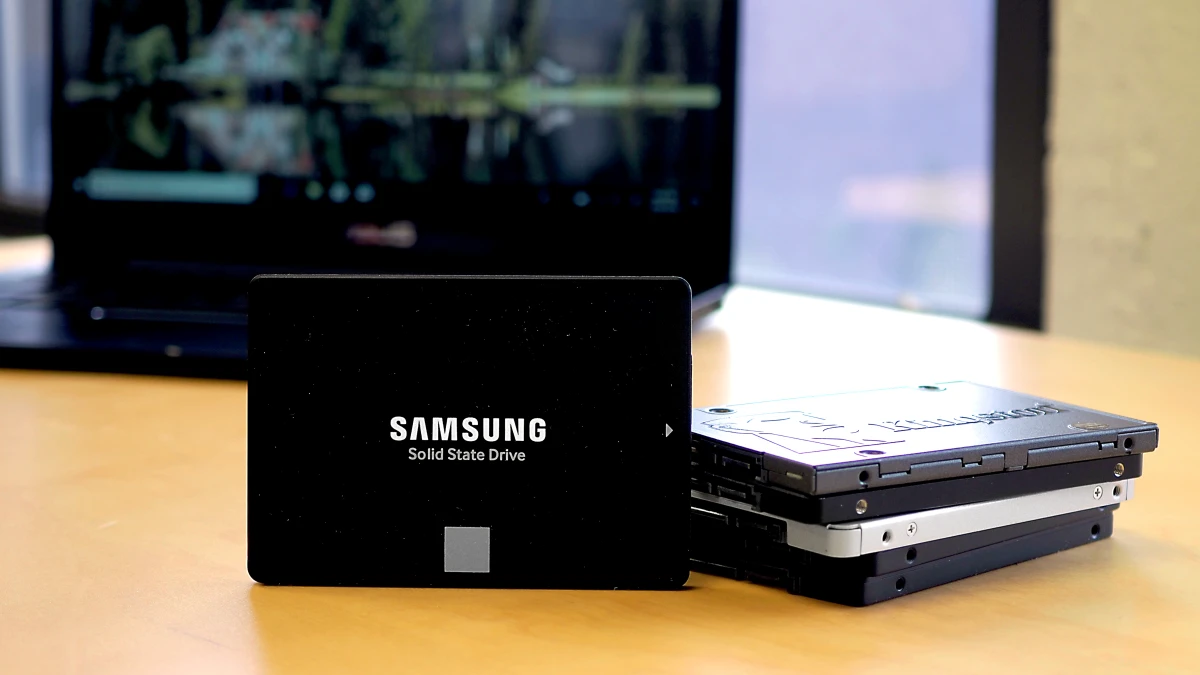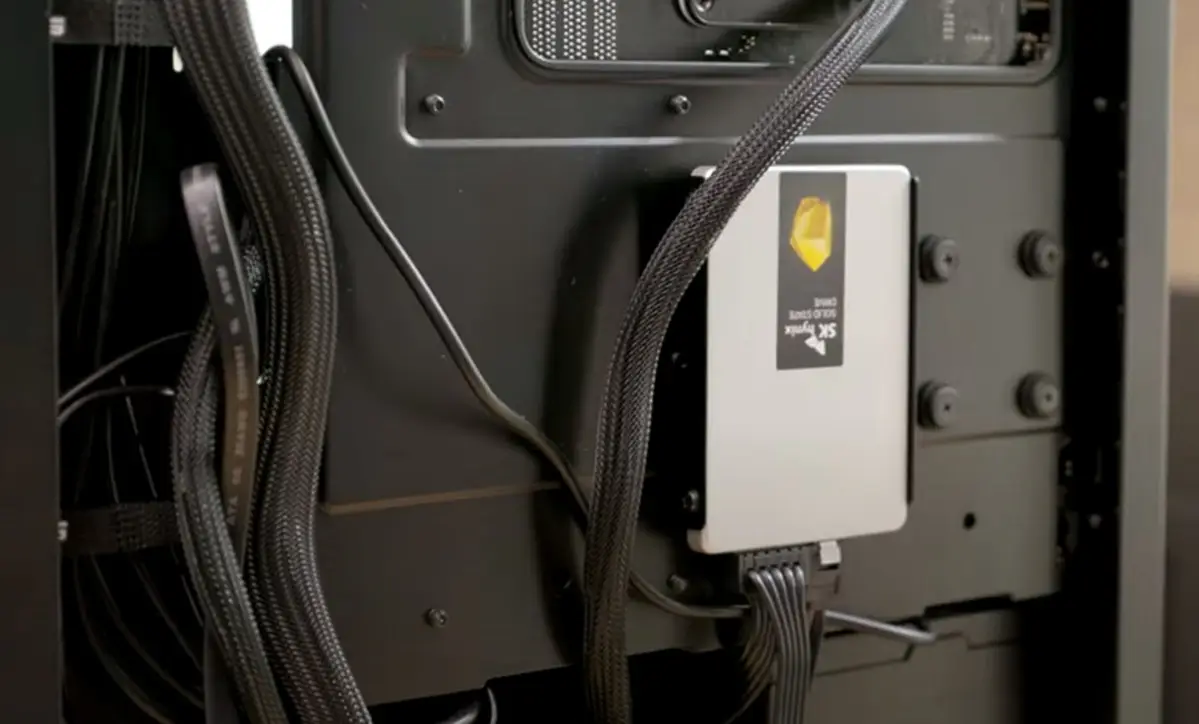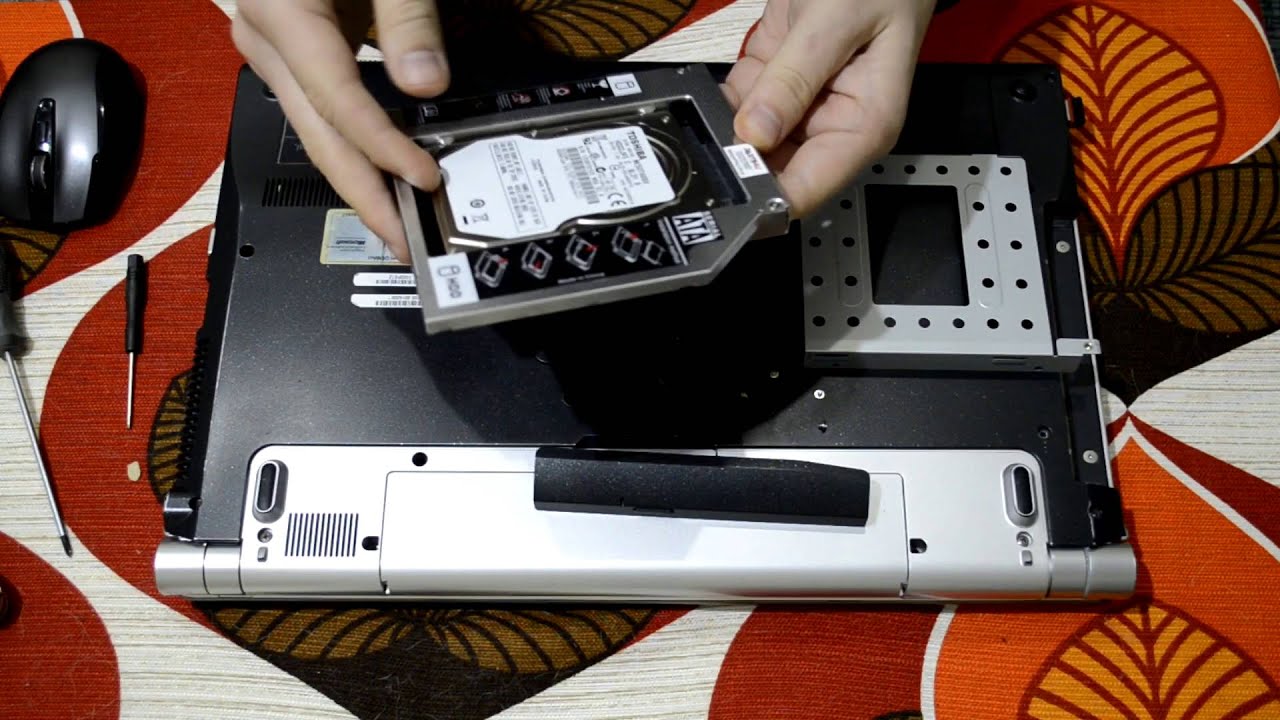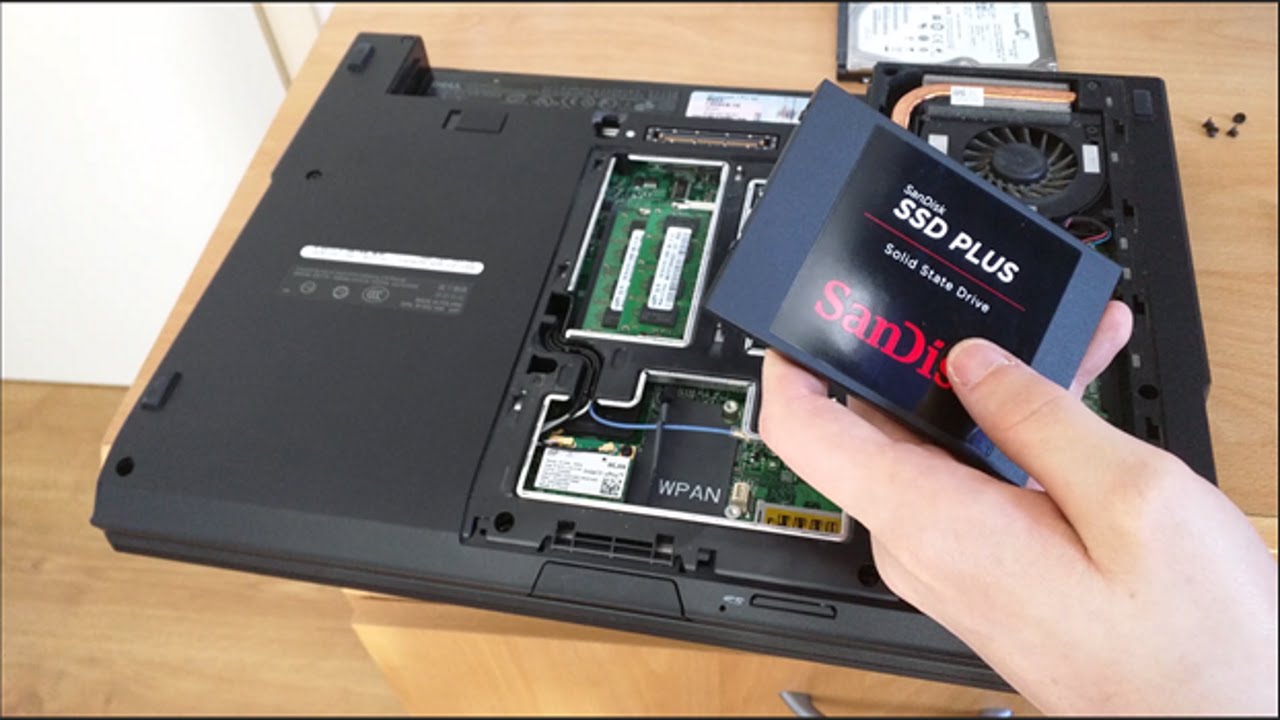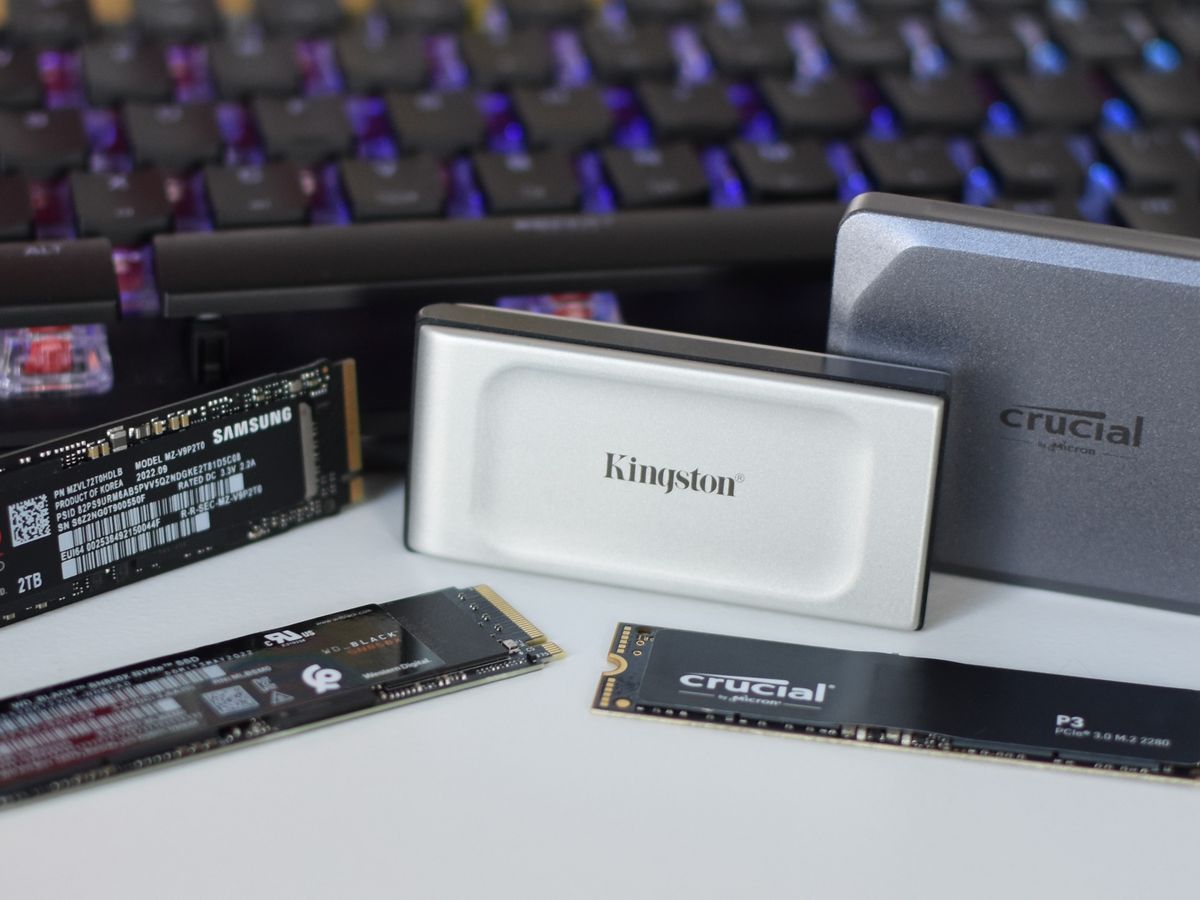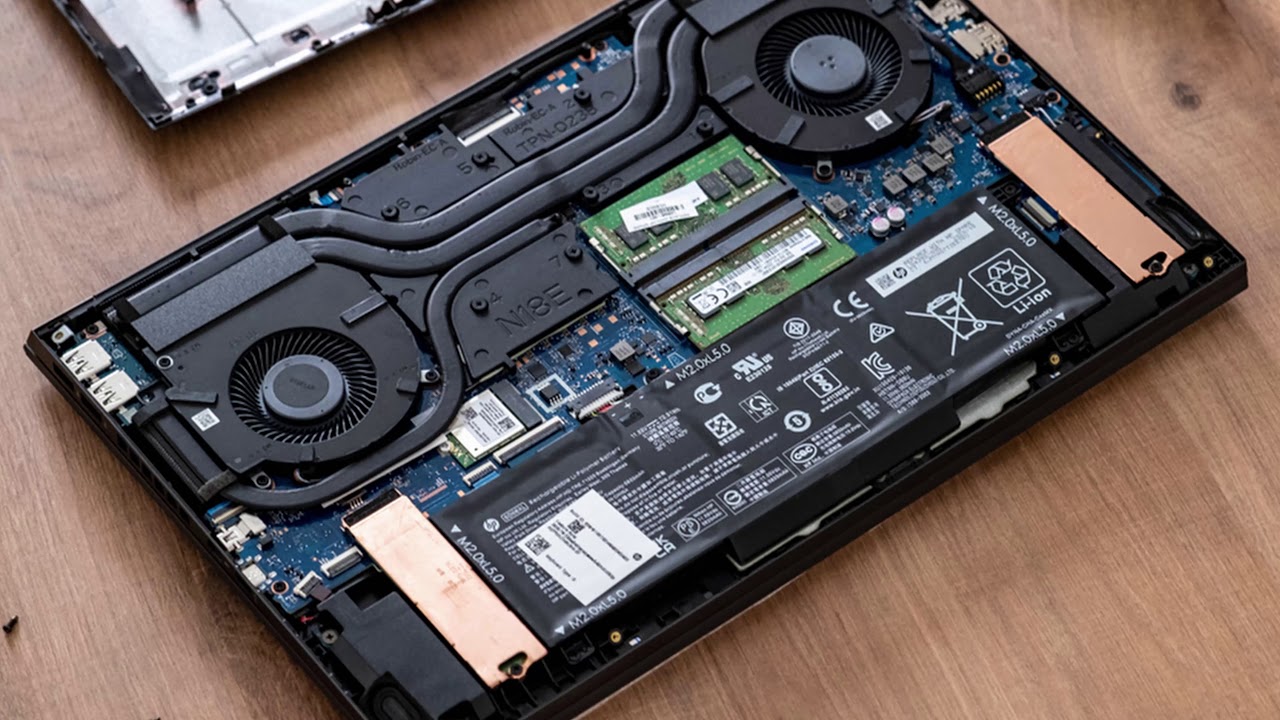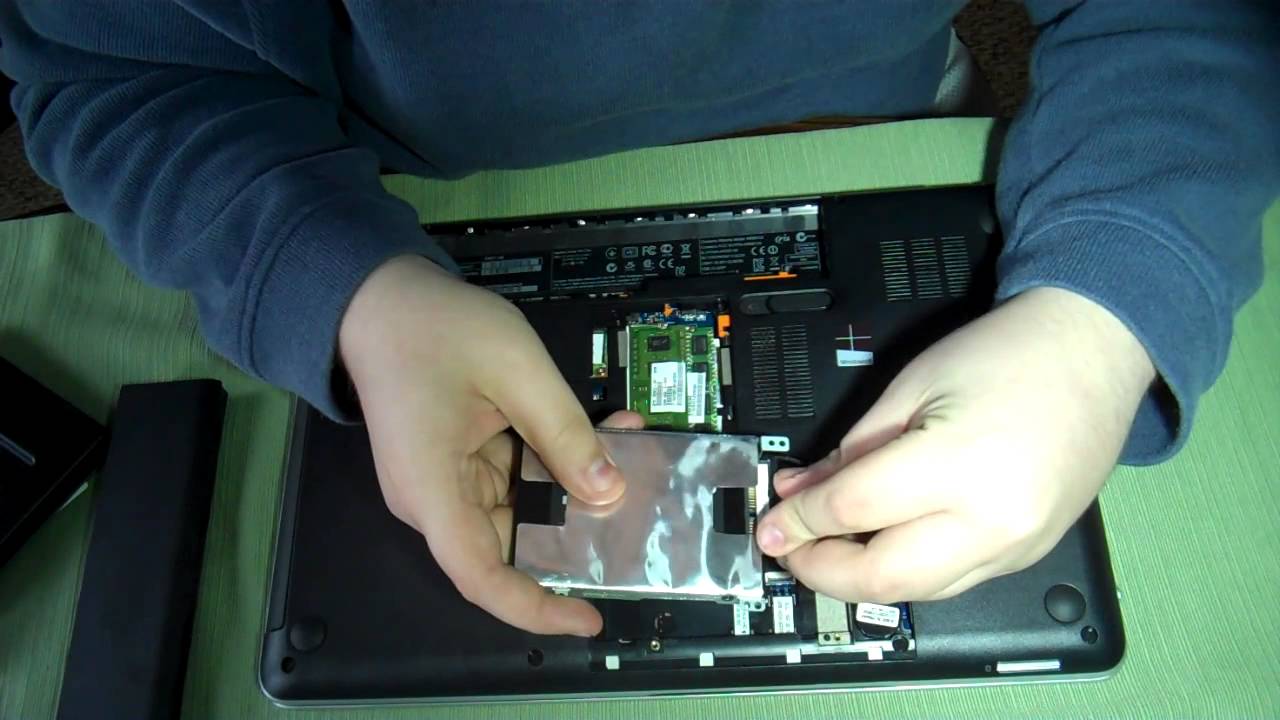Introduction
Welcome to the fast-paced world of solid state drives (SSDs) for laptops. If you’re looking to enhance the performance of your laptop or simply need more storage space, upgrading to an SSD is an excellent choice. Unlike traditional hard disk drives (HDDs), SSDs offer faster boot-up times, quicker application loading, and improved overall responsiveness.
In this article, we will explore the various factors you should consider when choosing an SSD for your laptop. From compatibility and storage capacity to speed and performance, we’ll cover everything you need to know to make an informed decision.
Upgrading to an SSD can significantly enhance your laptop’s performance, making it feel like a brand-new machine. By replacing the traditional spinning platters of an HDD with solid-state memory chips, SSDs offer faster read/write speeds and lower latency, resulting in quicker and smoother operation.
However, before diving into the world of SSDs, it’s important to consider a few key factors to ensure compatibility, maximum performance, and value for money. The right SSD for your laptop will depend on your specific needs, budget, and the model of your laptop.
In the following sections, we will explore these factors in detail to help you choose the perfect SSD for your laptop upgrade. So, let’s get started!
Benefits of Upgrading to a Solid State Drive
Upgrading to a solid state drive (SSD) offers numerous advantages over traditional hard disk drives (HDDs). Let’s take a closer look at the key benefits of upgrading to an SSD for your laptop:
- Increased Speed: One of the primary advantages of SSDs is their faster read and write speeds. Compared to HDDs, which rely on mechanical components, SSDs use flash memory technology. This allows for lightning-fast data transfer, resulting in quicker boot-up times, faster application loading, and seamless multitasking.
- Improved Performance: With an SSD, your laptop will experience improved overall performance. You’ll notice smoother and more responsive operation, whether you’re browsing the web, editing videos, or playing games. SSDs minimize lag, reduce loading times, and enable your laptop to handle demanding tasks with ease.
- Enhanced Durability: SSDs are more durable than HDDs, as they don’t have any moving parts. This makes them less susceptible to damage from drops, shocks, and vibrations. With an SSD, you can have peace of mind knowing that your data is better protected and your laptop is more resilient to everyday wear and tear.
- Energy Efficiency: SSDs consume less power than HDDs, which translates to longer battery life for your laptop. With an SSD, you can enjoy extended usage time, reduced power consumption, and increased productivity on the go. Additionally, SSDs generate less heat, contributing to a cooler and quieter laptop.
- Compact Size: SSDs are typically smaller and lighter than HDDs, making them ideal for laptops with limited space. The compact form factor of SSDs allows for more flexible installation options, enabling you to maximize the available space inside your laptop.
- Silent Operation: Due to the absence of moving parts, SSDs operate silently. Unlike HDDs, which produce mechanical noise from spinning disks and moving heads, SSDs provide a noise-free computing experience. This is particularly beneficial for those who value a quiet working environment or enjoy multimedia content without distractions.
By upgrading to an SSD, you can unlock these benefits and transform the performance of your laptop. Let’s now delve into the factors to consider when choosing the right SSD for your specific needs.
Factors to Consider When Choosing a Solid State Drive
When selecting a solid state drive (SSD) for your laptop, there are several important factors to keep in mind. Taking these factors into consideration will ensure that you choose an SSD that meets your specific requirements and provides optimal performance. Let’s explore the key factors to consider:
- Compatibility with Laptop Models: Not all SSDs are compatible with every laptop model. It’s crucial to check the specifications of your laptop to determine the type of SSD it supports. Common interface types include SATA, mSATA, and M.2. Ensure that the SSD you choose matches the interface and form factor required by your laptop.
- Storage Capacity Options: Consider your storage needs when choosing the capacity of your SSD. SSDs are available in a range of sizes, from 128GB to 4TB or more. Assess the amount of data you currently have and anticipate future storage requirements. Remember that the operating system and software will also consume some of the total capacity.
- Speed and Performance Considerations: Pay attention to the SSD’s read and write speeds, as they directly impact performance. Look for high sequential read and write speeds for faster data access. Additionally, consider the Random Input/Output Operations Per Second (IOPS) for reliable and responsive performance when accessing small files or multitasking.
- Form Factor and Physical Dimensions: SSDs come in various form factors and physical dimensions. The most common are 2.5-inch, mSATA, and M.2. Ensure that the physical dimensions of the SSD are compatible with the available space in your laptop. Additionally, check whether any additional mounting brackets or adapters may be required for installation.
- Interface Options: Different SSDs use different interface types. SATA is the most commonly supported interface, while newer laptops may support NVMe (Non-Volatile Memory Express) for even faster transfer speeds. Verify the interface supported by your laptop and choose an SSD accordingly for seamless compatibility.
- Pricing and Budget Considerations: SSDs come in a range of prices, depending on their brand, capacity, and performance. Set a budget and determine the level of performance you require. Consider balancing cost with the need for faster speeds and higher capacities to find the best SSD that fits your needs and budget.
- Installation Process and Requirements: Consider whether you’re comfortable with installing the SSD yourself or if you prefer to have a professional handle the upgrade. Check if any additional cables or accessories are required for installation. Some SSDs may come with cloning software or migration tools to simplify the process of transferring data from your existing drive to the new SSD.
By considering these factors, you can narrow down your options and choose the perfect SSD that suits your laptop and meets your performance and storage needs. In the next section, we will recommend some top SSDs for laptops to help in your decision-making process.
Compatibility with Laptop Models
When choosing a solid state drive (SSD) for your laptop, it is essential to ensure compatibility between the SSD and your specific laptop model. Not all SSDs are compatible with every laptop, as there are different interface types and form factors to consider. Here are some factors to keep in mind when assessing compatibility:
Interface Types: One crucial aspect of compatibility is the interface type of the SSD. The most common interface for laptops is SATA (Serial ATA), which offers a high-speed data transfer rate. However, newer laptops may support NVMe (Non-Volatile Memory Express) interface, which provides even faster performance. It is crucial to check which interface is supported by your laptop and choose an SSD that matches it.
Form Factors: SSDs come in different form factors, which refer to the physical size and shape of the drive. The most commonly used form factors for laptops are 2.5-inch, mSATA, and M.2. The 2.5-inch form factor is similar to traditional hard drives and is typically compatible with most laptops. However, newer laptops may feature smaller form factors like mSATA or M.2, which require specific slots or connectors. Make sure to consult your laptop manufacturer’s specifications to determine which form factor your laptop supports.
Physical Dimensions: In addition to form factor, it is essential to consider the physical dimensions of the SSD. Some laptops have limited space internally, especially ultra-thin models, so it is crucial to choose an SSD that fits within the available space. Take note of the length, width, and height of the SSD, and compare it with the dimensions specified in your laptop’s documentation or specifications.
Additional Mounting Requirements: Depending on the form factor and physical dimensions of the SSD, you may need additional mounting brackets or adapters to install it properly in your laptop. Some SSDs come with these accessories included, while others may require separate purchases. Ensure that you have the necessary mounting equipment or check if your laptop manufacturer provides any specific recommendations.
Manufacturer Recommendations: Laptop manufacturers often provide a list of compatible SSD models that have been tested and approved for use with their laptops. It is advisable to consult the manufacturer’s website or support documentation to find recommended SSD options. Following their recommendations can help ensure seamless compatibility and avoid any potential issues.
By considering the interface type, form factor, physical dimensions, and any additional mounting requirements, you can choose an SSD that is compatible with your laptop. Always refer to your laptop’s specifications and recommended SSD models to make the best choice. In the next section, we will discuss storage capacity options for SSDs, helping you determine the appropriate size for your needs.
Storage Capacity Options
Choosing the right storage capacity for your solid state drive (SSD) is an important consideration when upgrading your laptop. SSDs are available in a range of storage capacities, and selecting the appropriate size depends on your storage needs and usage requirements. Here are some factors to consider when considering SSD storage capacity:
Data Storage Requirements: Assess your current and future data storage needs. Consider the types of files you use regularly, such as documents, photos, videos, and applications. Determine how much storage space you currently require and anticipate any future data growth. Keep in mind that the operating system and software installation will also consume some of the total storage capacity.
Usage Patterns: Evaluate how you use your laptop. If you primarily use it for basic tasks like web browsing, email, and document editing, a lower storage capacity SSD may suffice. However, if you work with large media files, gaming, or video editing, consider opting for higher storage capacities to ensure sufficient space for your files without running out of storage quickly.
Budget Considerations: Storage capacity directly affects the price of an SSD. Higher-capacity drives are typically more expensive. Determine your budget and balance it with your storage requirements. If you have a limited budget, consider opting for a smaller capacity SSD and utilizing cloud storage or external drives for additional storage needs.
Future Expansion: Consider whether you want to leave room for future expansion. If you anticipate your storage requirements increasing over time, it may be wise to choose an SSD with a larger capacity than your immediate needs. This will give you the flexibility to store more data without needing to upgrade again in the near future.
Optimal Performance Benefits: It is worth noting that larger capacity SSDs often offer better performance than their smaller counterparts. As SSDs have more free space, they can distribute data more effectively, leading to improved performance and longevity. If performance is a key consideration, choosing a larger capacity SSD may provide additional benefits beyond increased storage.
Considerations for Gaming and Multimedia: If you are a gamer or frequently work with multimedia files, it is recommended to consider larger storage capacities, as games and multimedia files tend to require substantial storage space. High-quality games, 4K videos, and multimedia projects can quickly consume significant storage, so having ample capacity is essential.
By considering your data storage requirements, usage patterns, budget, future expansion needs, and any specific requirements for gaming or multimedia, you can select the optimal storage capacity for your SSD. In the next section, we will explore speed and performance considerations when choosing an SSD for your laptop.
Speed and Performance Considerations
When selecting a solid state drive (SSD) for your laptop, speed and performance are crucial factors to consider. SSDs are renowned for their ability to provide faster data access and improved overall performance compared to traditional hard disk drives (HDDs). Here are the key speed and performance considerations to keep in mind:
Read and Write Speeds: The read and write speeds of an SSD determine how quickly it can access and transfer data. Higher read and write speeds result in faster boot-up times, quicker application launch, and seamless multitasking. Look for SSDs with fast sequential read and write speeds to ensure rapid data access and transfer.
Random Input/Output Operations Per Second (IOPS): Alongside read and write speeds, the Random Input/Output Operations Per Second (IOPS) metric is important for determining SSD performance, especially when working with small files and multitasking. Higher IOPS values indicate the SSD’s ability to handle multiple read and write operations simultaneously, leading to a more responsive and efficient system.
Cache Size: SSDs often have a cache, which is a small portion of high-speed memory used to store frequently accessed data. A larger cache can enhance performance by speeding up data retrieval, particularly for frequently used programs and files.
Controller Technology: The SSD controller plays a crucial role in managing data flow and optimizing performance. Advanced controller technologies, such as NVMe (Non-Volatile Memory Express), can significantly improve speed and performance. However, keep in mind that your laptop’s interface must support NVMe technology for full compatibility and optimal performance.
Multi-Level Cell (MLC) or Triple-Level Cell (TLC) Technology: SSDs utilize different types of memory cells to store data. MLC and TLC are commonly used. MLC offers better performance and endurance but is often more expensive. TLC, on the other hand, provides a more budget-friendly option with slightly lower performance and endurance. Consider your performance requirements and budget when choosing between MLC and TLC technology.
Overall System Configuration: While SSDs can significantly boost performance, it’s important to consider the overall system configuration of your laptop. Factors such as the processor, RAM, and graphics card also contribute to the overall performance. Upgrading to an SSD will provide noticeable improvements in areas such as boot times and application loading, but the overall performance of demanding tasks will still be influenced by other components.
Real-World Performance Reviews: To get a better understanding of the actual performance of an SSD, it’s helpful to read real-world performance reviews and benchmarks. These reviews provide insights into how the SSD performs in various scenarios and can help you make an informed decision based on your specific needs and usage patterns.
By considering the read and write speeds, IOPS, cache size, controller technology, memory cell type, overall system configuration, and real-world performance reviews, you can identify an SSD that offers the speed and performance you desire. In the next section, we will discuss the importance of form factor and physical dimensions when choosing an SSD for your laptop.
Form Factor and Physical Dimensions
When choosing a solid state drive (SSD) for your laptop, it’s important to consider the form factor and physical dimensions of the drive. SSDs come in various sizes and form factors, and selecting the right one is essential to ensure compatibility and proper installation. Here are the key considerations for form factor and physical dimensions:
2.5-Inch Form Factor: The 2.5-inch form factor is the most common size for SSDs. These drives are designed to fit into the same space as traditional 2.5-inch hard disk drives (HDDs), making them compatible with most laptops. If you have a standard laptop or desktop computer, a 2.5-inch SSD should be a suitable choice.
mSATA and M.2 Form Factors: Some newer laptops and ultra-thin devices use smaller form factors like mSATA and M.2. These form factors are designed to save space and fit within the ultra-compact designs of modern laptops. It’s crucial to check your laptop’s specifications to determine if it supports mSATA or M.2 SSDs before making a purchase.
Physical Dimensions: Alongside the form factor, it’s important to consider the physical dimensions of the SSD. SSDs can vary in length, width, and height. Be sure to check the available space inside your laptop and compare it with the dimensions of the SSD you’re considering. This will ensure that the SSD fits properly within your laptop’s drive bay or compatible slot.
Additional Mounting Requirements: Depending on the form factor and physical dimensions of the SSD, additional mounting brackets or adapters may be required for installation. Some SSDs come with these accessories included, while others may require separate purchases. Ensure that you are aware of any additional mounting requirements and have the necessary equipment to install the SSD properly.
Laptop Manufacturer Recommendations: Laptop manufacturers often provide recommendations and guidelines for compatible SSDs for their specific laptop models. It’s advisable to check the manufacturer’s website or support documentation for any specific recommendations. Following their guidelines will ensure compatibility and proper fit within your laptop.
Maximizing Available Space: SSDs are known for their compact size, which is particularly beneficial for laptops with limited internal space. Consider the physical dimensions to maximize the available space inside your laptop for other components or potential future upgrades.
By considering the form factor, physical dimensions, additional mounting requirements, laptop manufacturer recommendations, and maximizing available space, you can choose an SSD that fits perfectly within your laptop and ensures seamless compatibility. In the next section, we will explore the interface options available for SSDs when upgrading your laptop.
Interface Options
Interface compatibility is a critical consideration when choosing a solid state drive (SSD) for your laptop. The interface determines how the SSD connects to your laptop’s motherboard and affects data transfer speeds. Understanding the different interface options will help you select an SSD that is compatible with your laptop and provides the optimal performance. Here are the most common interface options for SSDs:
SATA (Serial ATA): SATA is the most widely supported interface in laptops, and it is compatible with both HDDs and SSDs. SATA III (SATA 6Gbps) is the current standard, offering maximum data transfer rates of up to 6 gigabits per second. If your laptop has a SATA interface, you can easily replace your existing HDD with a SATA SSD for noticeable performance improvements.
mSATA: mSATA (mini-SATA) is a small form factor SSD designed for ultra-thin and compact laptops. It uses the mini-PCI Express form factor and can be found in some older laptop models. However, it’s important to check your laptop’s specifications to determine if it supports mSATA SSDs before making a purchase.
M.2: M.2 is a versatile interface that supports both SATA and NVMe SSDs. M.2 SSDs come in different lengths and width variations, known as “keys.” M.2 SSDs offer faster speeds compared to SATA SSDs, especially when using the NVMe protocol. It is important to note that not all laptops support M.2 SSDs, so checking your laptop’s specifications is crucial.
NVMe (Non-Volatile Memory Express): NVMe is a more advanced interface protocol that provides even faster data transfer speeds. It is specifically designed for SSDs and offers significant performance improvements over SATA. NVMe SSDs typically use the M.2 form factor, but make sure your laptop supports NVMe before opting for an NVMe SSD.
When choosing an interface option, consider the compatibility of your laptop and the performance benefits you seek. If your laptop supports SATA III, a SATA SSD is a viable option. If you have an ultra-thin laptop or the laptop specifications indicate support for mSATA or M.2, you can explore those interface options. If optimal performance is your priority and your laptop supports NVMe, consider investing in an NVMe SSD for lightning-fast data transfer speeds.
It’s important to consult your laptop’s specifications and check with the manufacturer for any specific interface limitations or recommendations. By selecting the appropriate interface option, you can ensure compatibility and take full advantage of the benefits offered by modern SSD technology.
In the next section, we will discuss pricing and budget considerations to help you make an informed decision when choosing an SSD for your laptop.
Pricing and Budget Considerations
When it comes to choosing a solid state drive (SSD) for your laptop, pricing and budget are important factors to consider. SSDs are available at a range of price points, and it’s essential to find a balance between cost and the desired performance and storage capacity. Here are several pricing and budget considerations to keep in mind:
Set a Budget: Determine how much you’re willing to spend on an SSD upgrade for your laptop. Setting a budget upfront will help you narrow down your options and focus on SSDs that fit within your financial limits.
Consider Performance Needs: Assess your performance needs and prioritize spending on an SSD that provides optimal performance for your specific usage requirements. If you’re a heavy multitasker, gamer, or utilize resource-intensive applications, investing in a higher-performing SSD may be worth it for a smoother and more responsive experience.
Storage Capacity: Storage capacity directly affects the price of an SSD. Consider your storage requirements and find a balance between the capacity you need and the budget you have. If you have a tight budget, opting for a smaller capacity SSD and utilizing external storage options or cloud services can help manage the cost.
Compare Prices and Brands: Shop around and compare prices from different retailers and brands. While renowned brands often come with a higher price tag, they may also offer better warranty and customer support. However, lesser-known brands or budget options can provide a reliable and affordable alternative if they meet your performance and reliability criteria.
Consider Future Requirements: Think about your future storage and performance needs. If you anticipate needing more storage or performance in the near future, it may be worth investing in a higher-capacity or faster SSD now to avoid the hassle of upgrading again later.
Check for Deals and Discounts: Keep an eye out for deals, discounts, or promotional offers. Retailers often offer discounts during sales events or seasonal promotions, which can significantly reduce the overall cost of an SSD. Additionally, consider signing up for newsletters or following reputable SSD retailers to stay informed about any upcoming deals.
Warranty and Reliability: Take into account the warranty and overall reliability of the SSD. While most SSDs come with a warranty, the duration and terms can vary. Consider the warranty length and any customer reviews or ratings that speak to the reliability and longevity of the SSD before making a final decision.
Remember that while SSDs may have a higher upfront cost compared to traditional hard disk drives (HDDs), the performance and durability benefits they offer can make them a worthwhile investment. Evaluating your budget and considering these pricing considerations will help you find the SSD that best fits your needs without breaking the bank.
In the next section, we will discuss the installation process and requirements when upgrading to an SSD in your laptop.
Installation Process and Requirements
Upgrading to a solid state drive (SSD) in your laptop can significantly enhance its performance and speed. Before embarking on the upgrade process, it’s important to understand the installation requirements and steps involved. Here are the key considerations for the installation process:
Check Compatibility: Ensure that the SSD you choose is compatible with your laptop in terms of form factor and interface type. Refer to your laptop’s specifications or contact the manufacturer to confirm the compatibility of the SSD you intend to purchase.
Backup Your Data: Before installing the SSD, it is crucial to back up all your important data. This ensures that in case of any issues during the installation process, your data remains safe. You can back up your data to an external hard drive, cloud storage, or another storage device.
Required Tools: The installation process typically requires basic tools such as a screwdriver. Consult your laptop’s user manual or online resources to determine the specific tools needed for your laptop model.
Physically Installing the SSD: To install the SSD, you will need to remove the laptop’s back cover or access panel. Unscrew and remove the existing HDD (if applicable) and replace it with the SSD. Secure the SSD in place using the screws or mounting brackets provided with the SSD or within your laptop’s hardware.
Cloning or Fresh Installation: Once the SSD is physically installed, you have two options for transferring your data. The first option is to clone your existing HDD to the SSD, which creates an exact replica of your current system. Alternatively, you can do a fresh installation of your operating system and reinstall your applications and files manually on the new SSD. Software or cloning tools are often provided with the SSD to simplify the cloning process if you choose that option.
BIOS/UEFI Settings: Depending on your laptop’s BIOS/UEFI settings, you may need to change the boot order to prioritize the SSD. This ensures that your laptop boots from the new SSD rather than the old HDD. Consult your laptop’s user manual or manufacturer’s support documentation for guidance on accessing and modifying these settings.
Verify SSD Functionality: After the installation process, restart your laptop and verify that it recognizes the new SSD. Check the BIOS/UEFI settings to ensure that the SSD is detected. Once your laptop has successfully booted from the SSD, you can run diagnostics or perform benchmarks to confirm that the SSD is functioning optimally.
Securely Dispose of the Old HDD: If you have replaced your existing HDD with the SSD, ensure that you securely wipe the data from the old HDD before disposing of it. This can be done using data wiping software or physically destroying the drive to prevent any unauthorized access to your data.
It’s important to note that the installation process may vary depending on your laptop model and manufacturer. Always refer to the specific instructions provided by the laptop manufacturer or consult professional assistance if you are unsure about any step of the process.
By following the proper installation process and meeting the necessary requirements, you can successfully upgrade your laptop’s storage to an SSD and enjoy the improved performance and speed that it provides.
In the next section, we will provide a list of top recommended SSDs for laptops to help you make an informed decision.
Top Recommended Solid State Drives for Laptops
When it comes to choosing a solid state drive (SSD) for your laptop, there are several top-quality options available on the market. These SSDs provide excellent performance, reliability, and value for laptop users. Here are some of the top recommended SSDs for laptops:
- Samsung 970 EVO Plus: The Samsung 970 EVO Plus is a popular choice for laptop upgrades. With blazing fast read and write speeds, it offers exceptional performance. It is available in various capacities and utilizes the NVMe interface for optimal speed. The 970 EVO Plus also boasts reliable endurance and comes with a 5-year warranty.
- Crucial MX500: The Crucial MX500 is another highly regarded SSD known for its reliability and stability. It offers excellent read and write speeds and is available in a wide range of capacities. The MX500 is a great choice for those on a budget, as it provides solid performance at an affordable price point.
- Western Digital WD Blue 3D NAND: Western Digital is a trusted brand in the storage industry, and their WD Blue 3D NAND SSDs are no exception. These drives offer a balance of performance, reliability, and affordability. With SATA III interface and various capacity options, the WD Blue 3D NAND SSDs are a solid choice for laptop users.
- ADATA XPG SX8200 Pro: The ADATA XPG SX8200 Pro is a high-performance SSD that delivers impressive read and write speeds. It utilizes the NVMe interface and is available in different capacities. The SX8200 Pro is known for its reliability, durability, and value, making it an excellent choice for gamers and power users.
- SanDisk Extreme Pro: The SanDisk Extreme Pro SSD is designed for professionals and enthusiasts who demand top-tier performance. With its fast read and write speeds, it delivers exceptional performance for demanding tasks. The Extreme Pro also offers durable construction and is available in various capacities to suit different storage needs.
- Intel 660p: The Intel 660p is an entry-level NVMe SSD that provides good performance at an affordable price. It offers decent read and write speeds and is available in multiple capacities. The 660p is an ideal choice for budget-conscious users who want to experience the benefits of NVMe technology.
These are just a few of the top recommended SSDs for laptops. When choosing an SSD, consider your specific needs, budget, and the compatibility with your laptop model. It’s also essential to research and read reviews to ensure the chosen SSD meets your expectations in terms of performance, reliability, and value.
Remember, upgrading to an SSD can significantly enhance the performance and speed of your laptop, delivering a smoother and more responsive computing experience. Take the time to find the best SSD that suits your requirements, and enjoy the benefits of faster boot times, quicker application loading, and improved overall performance.
Before making a final decision, make sure to compare prices, warranties, and available capacities to choose the SSD that offers the best combination of performance, reliability, and affordability for your specific needs.
Conclusion
Choosing the right solid state drive (SSD) for your laptop is a crucial decision that can greatly enhance its performance, speed, and overall usability. By considering factors such as compatibility, storage capacity, speed and performance, form factor, interface options, pricing and budget, and the installation process, you can make an informed decision that meets your specific requirements.
Upgrading to an SSD offers a wide range of benefits, including increased speed, improved performance, enhanced durability, energy efficiency, compact size, and silent operation. With faster boot-up times, quicker application loading, and improved responsiveness, an SSD can transform your laptop into a more efficient and enjoyable device.
When selecting an SSD, ensure compatibility with your laptop model, whether it requires the SATA, mSATA, M.2, or NVMe interface. Consider your storage capacity needs, balancing current requirements with future expansion possibilities. In terms of speed and performance, look for SSDs with fast read and write speeds, higher IOPS, and advanced controller technology for optimal performance.
Take into account the form factor and physical dimensions to ensure a proper fit inside your laptop. Consider interface options like SATA, mSATA, M.2, and NVMe, ensuring compatibility with your laptop and maximizing data transfer speeds.
With pricing and budget considerations, set a budget and find the right balance between cost and performance. Compare prices, brands, and storage capacity to find an SSD that offers the best value for your investment.
Once you have chosen your SSD, carefully follow the installation process outlined by the laptop manufacturer or seek professional assistance if needed. Ensure compatibility, back up your data, and verify the functionality of the new SSD after installation.
Some top recommended SSDs for laptops include the Samsung 970 EVO Plus, Crucial MX500, WD Blue 3D NAND, ADATA XPG SX8200 Pro, SanDisk Extreme Pro, and Intel 660p. However, research different options, read reviews, and consider your specific needs before making a final decision.
Upgrading to an SSD is an investment that can significantly enhance your laptop’s performance and user experience. By carefully assessing your requirements and considering the various factors outlined in this article, you can confidently choose an SSD that meets your needs and unlocks the full potential of your laptop.







